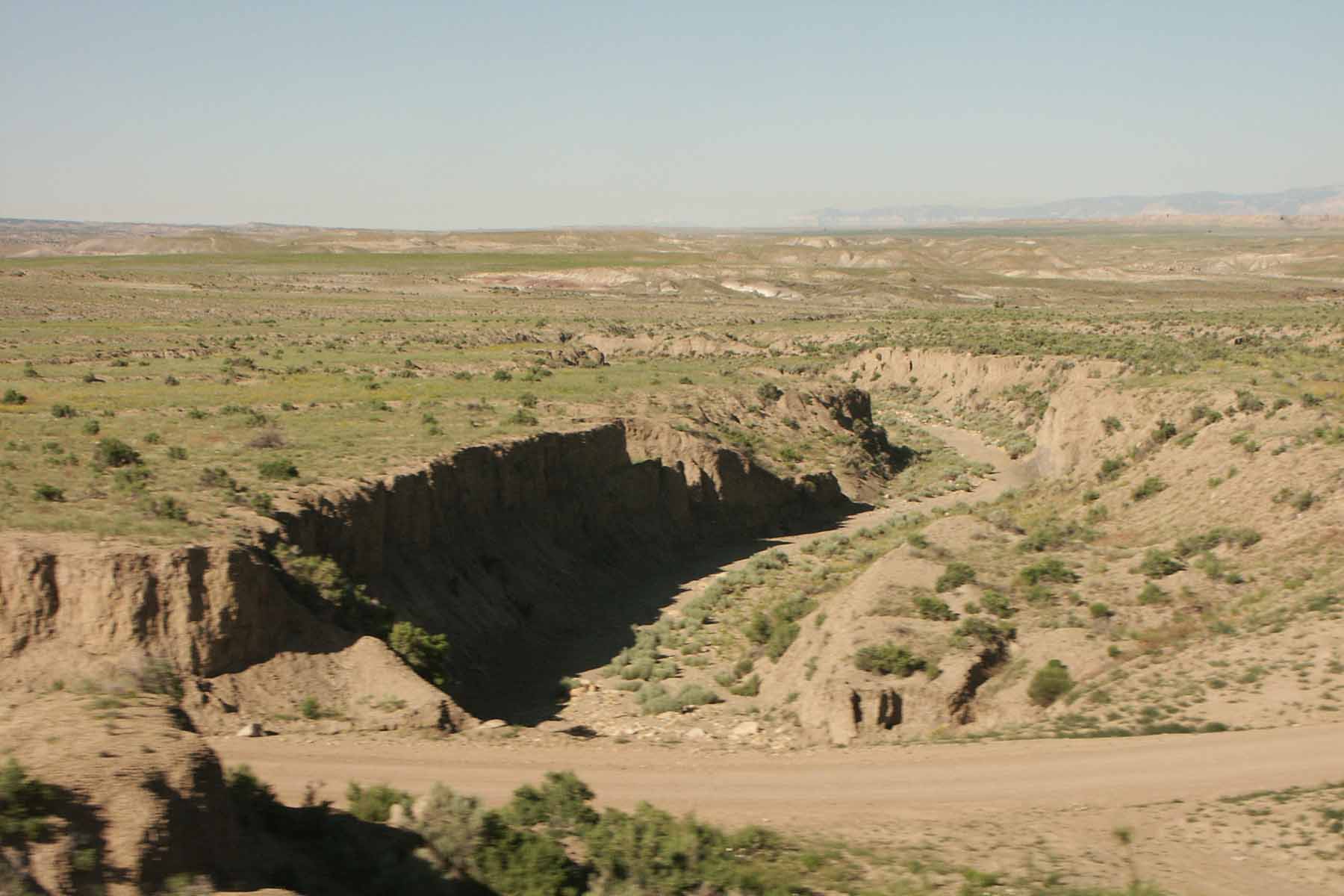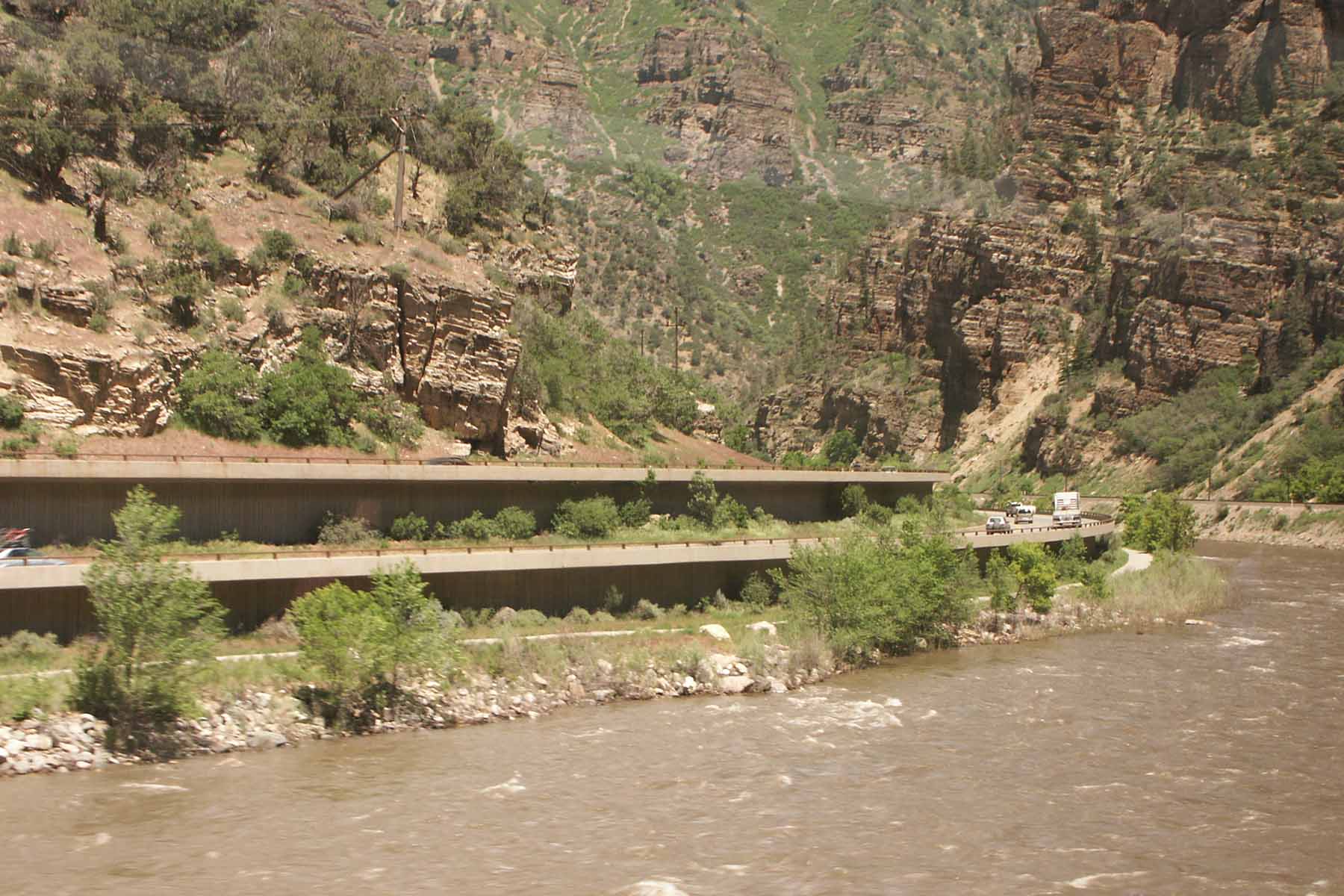June 17, 2006
Day six, Utah and Colorado
Day six starts in Utah and takes us through Colorado. click below to see the details. There's pictures this time.
If this is day six then we must be in Utah. The sun had not come up yet but there was enough light to get a general idea of what we were passing. I looked at my watch and the timetable and discovered that if we were on time, we probably had just departed Salt Lake City, Utah. We had been running a little behind schedule when I went to sleep last night. I turned on the GPS to see where we actually were, I found that we had made up the time and were just about on time again.
Allow me to take a slight detour here. If you go to the library or a book store you can find several books about some of the train that Amtrak runs. In 1994 I was working the evening shift quite often and one of the other guys used to listen to NPR and often left the radio on when he went home. We were usually too busy to worry about changing the station or even turning the thing off. Dick Estell, the “Radio Reader” was reading the book “Zephyr”, by Henry Kisor (ISBN 0-8129-1984-X). I wasn’t able to listen every evening but from time to time I got to hear parts of the book. I heard enough of it that I wanted to read it. It’s a great book that goes into some of the behind the scenes things that the public never sees. You have to go through three chapters before you ever board the train. He talks about the people and places you might see or meet on a Zephyr trip. We ask our crew if they knew any of the people mentioned in the book. A few were known to some of our crew but none were on our train. When we arrived in Glenwood Springs we think we saw Sandi Brown who’s photo was in the book.
The book is still available if you search the internet with the ISBN number. The reading is easy and even though it has a lot of background material, it’s not a highly technical book with engine specifications, etc… My brother who’s not a “train nut” like me said he really enjoyed it and it gave him some ideas of things to look for as we traveled.
Now, back to day six. As the sun came up we found our self in some fairly flat terrain with some hills in the distance. Several times I tried to imagine what it must have been like for the pioneers as they traveled through the area a hundred and fifty years earlier. I imagined that it was quite hot in the summer and brutally cold in the winter. There were no trees anywhere. The prairie was flat for the most part but every now and then there would be a “canyon.” Well, not really a canyon but a formidable obstacle if you were dragging a wagon. These canyons were maybe ten to twenty feet deep with near vertical walls about a half of their depth. They were about as wide as they were deep. They were the result of erosion. They would go as far as I could see. Pioneers on horseback could probably find a suitable place to cross nearby but those with wagons probably had to go miles to find a crossing point.

It wasn’t too long until we began seeing rock formations like we had never seen before. They were red and orange. Then there was the occasional river that we would cross or parallel for awhile. The land was mostly barren except for some green near the rivers. The hill sides looked like something that had been excavated recently.
Somewhere along the way a family of Quakers boarded our train, I don’t remember where it was. At least we thought they were Quakers. It was a young couple with her parents and three children. The ladies wore long skirts and a cap typical of Quakers. The men had beards and they all dressed in solid colors. As I said, we thought they were Quakers but we noticed that both of the men had cell phone. Sonny asks them about it. Turns out they were Mennonites. They embrace modern technologies but still cling to a lot of their traditional values. They were traveling to Illinois for a wedding. The children were probably between four and seven and were very well behaved and the daughter was cute as a button. We talked with the young man off and on most of the day. They were very interesting and he had a Dutch accent. He did concrete and construction work.
As morning grew old we got into the western foot hills of the Rockies. We were still on time. We arrived in Grand Junction around 10:45AM. Things were starting to turn green. We were scheduled to arrive in Glenwood Springs at 12:30PM and we were expecting another very scenic trip from that point. We were not disappointed. Near Glenwood Springs we came along side the Colorado River. For the next six hours we would travel through some of the most beautiful country in the west. We would be paralleling the river to the continental divide. As we left Glenwood Springs, I-70 was just across the river from us. This was the last stretch of the highway to be completed. There was quite a bit of controversy about building the highway along the river. The environmentalist said it would ruin the beauty of the river. It turned out to be a beautiful solution. The westbound lanes are terraced above the eastbound lanes. You need to see it to appreciate it. As we continued we saw rafters, fishermen, and kayakers but no swimmers. The water was probably a bit nippy for that. After about a half hour of taking photos I decided to just put the camera down and enjoy the view. I could have taken hundreds of pictures between Glenwood Springs and Denver but I didn’t want to see them all through the viewfinder of a camera.

At 4:10PM we reached Frasier-Winter Park. This was the last stop before we crossed the continental divide. It was about sixty-two miles to Denver but the trip would take two hours and forty-eight minutes.
From Winter Park we would have to climb to the highest elevation along the route. Then we would cross under the continental divide via the Moffett Tunnel. The tunnel is six miles long. Before entering the tunnel the train crew made an announcement and asks passengers to refrain from walking between coaches while the train was in the tunnel. It was a way to reduce the amount of diesel fumes entering the coaches. It took about 15 minutes to travel portal to portal. From this point on we would be going downhill to Denver.
You might be wondering about why it takes so long to travel slightly over sixty miles. The route was very curvy and we were going downhill, so I’m sure that for safety reasons, speed was limited. The scenery was still excellent. When we finally neared Denver we were still a thousand feet above the level of the city. The tracks zigzag back and forth across the hillside to get to the bottom.
Denver’s station is a type that Amtrak dislikes. We came in towards the station from the northwest. The train had to go through a wye and then back into the station. Amtrak dislikes having to make this extra movement since it requires so much extra time. Once we got there we had bout twenty-five minutes to get out and stretch, walk around, and pick up some snacks or drinks in the station.
After departing Denver it wouldn’t be long before sunset. Day six was nearing an end for me. I don’t remember where we were or what time it was but sleep would not be an elusive thing this evening. It had been a beautiful day.
Posted by john at June 17, 2006 10:23 PM